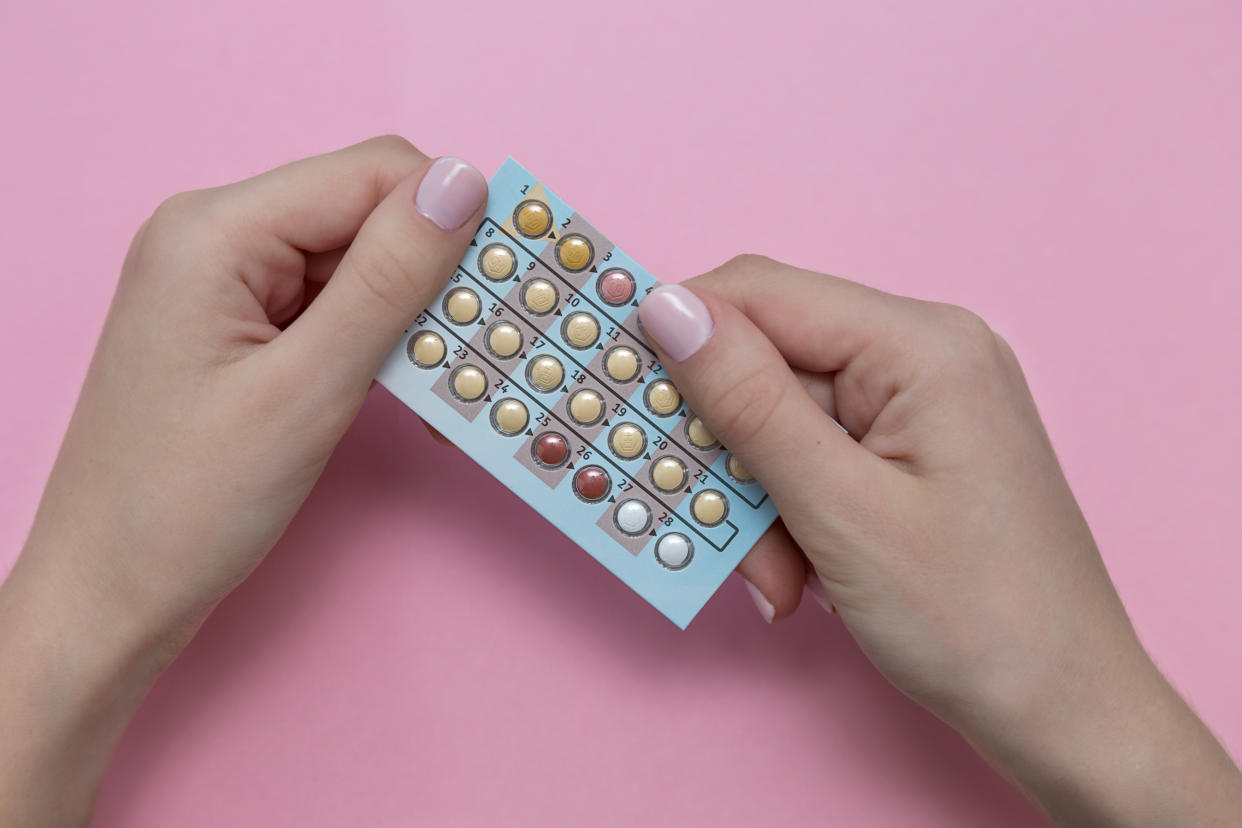Once-a-month contraceptive pill is in development

Scientists are developing a contraceptive pill that women could take just once a month.
A team from the Massachusetts Institute of Technology created a star-shaped drug that unfolds in the stomach, steadily releasing hormones on each of its six arms.
READ MORE: What to do if you forget to pack it and other holiday pill dilemmas sorted
The star is too large to be excreted from the body until around three weeks after it was swallowed, when it starts to break down.
This causes the typical period-like bleeding that many women have during their week-long “break” from the pill.
Tests in pigs reveal the hormonal medication levonorgestrel, which prevents unwanted pregnancies, was detectable in the animals’ blood a month after the drug was swallowed.
Funded by The Bill and Melinda Gates Foundation, the scientists hope to test the once-a-month pill in human trials over the next few years. It is unclear when it may be available.
“The concept of a monthly oral contraceptive pill is attractive and has the potential to broaden contraceptive choice,” Dr Diana Mansour, from the Faculty of Sexual and Reproductive Health, told the BBC.
“In theory, a monthly pill may be more effective than current oral contraceptives, which women are required to take every day.”
READ MORE: A woman has created a contraception review app
The pill is a popular method of contraception. Around 3.75 million women in the UK were on it in 2000, according to the sexual-health charity fpa.
The combined pill, which contains both oestrogen and progesterone, is more than 99% effective when taken correctly, the NHS reports.
Most are advised to take a tablet every day for three weeks, followed by a seven-day “break”.
Research suggests, however, up to half of those on the pill miss at least one dose, or take it at the wrong time, over any given three months.
While other long-term contraceptives exist, like the “coil” or implant, the “oral route is most widely used”, the Harvard scientists wrote in the journal Science Translational Medicine.
Drug adherence may be improved by “reducing dosing frequency”, they claim.
To make the pill more user friendly, the scientists encased a version of it in a hardy gelatin capsule that withstands stomach acid.
Once swallowed, the star-shaped drug expands to around 5cm (1.9 inches) wide. The “exit” of the stomach to the large intestine is just under 2cm (0.7 inches).
READ MORE: What does the future of birth control look like?
The pill therefore gets “lodged” in the stomach for three weeks before breaking down, followed by a seven-day “break”.
While the stomach “churns” to break down food as part of the digestive process, the scientists insist there are no safety concerns with having the contraceptive in there for a prolonged period of time.
“Our studies suggest there shouldn't be any problem with blockages or digesting and passing food,” Dr Giovanni Traverso, from Harvard - who helped develop the prototype - said.
The sexual-health charity Brook welcomed the development but added more work is required to ensure the pill can continually release a drug dose that suppresses ovulation in humans.
If successful, the scientists hope the same drug-delivery system will also enable controlled-dosing of other therapies, like malaria medication.


